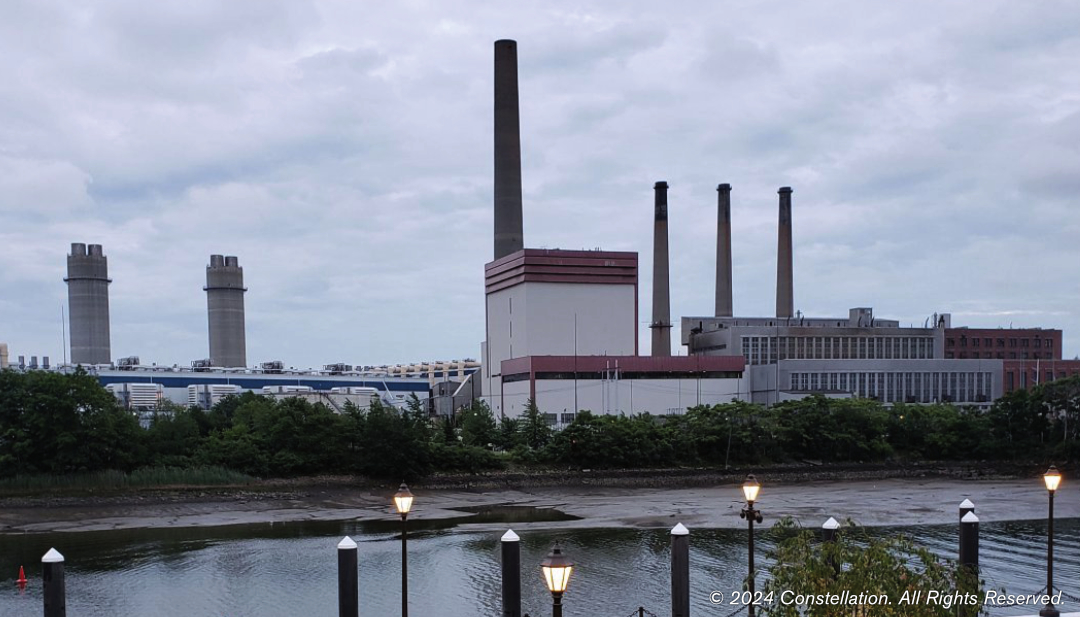All
New England’s Largest Gas-Fired Electric Plant Is Retired
by Ed Burke and Kelly Burke, Dennis K. Burke Inc.

Closure represents a significant shift in regional energy production
In June, Constellation Energy shut down and permanently retired their natural gas-fired Mystic Generating Station in Everett, Massachusetts – just north of Boston.
Mystic was one of the oldest U.S. electric power plants still in operation. It also had the highest nameplate capacity of any of the Massachusetts generating stations.
Mystic Generating Station had a long and proud history of powering Greater Boston and beyond. Mystic began to produce power during World War II to help the war effort and it continued to power the region for over 80 years.
The power plant was capable of burning both natural gas and petroleum, but mostly burned natural gas. The highly efficient combined cycle units were low-emitting and provided over 1,400 megawatts of capacity at a strategic location of the electric grid.
As New England’s largest electric plant powered with fossil fuels, its closure represents a significant shift in energy production for the region. Mystic’s retirement suggests that the era of burning fossil fuels for electricity in New England may have peaked.
A few years ago, Mystic’s plant operators announced that the station had become unprofitable. Electricity customers paid hundreds of millions of dollars over the last few years to support the aging station, as grid operators planned for its closure. Customers were paying higher prices that weren’t competitive just to help keep the power plant open.
The shutdown of the plant is not expected to cause any power disruptions in the region because there have been transmission upgrades to bring more electricity into Greater Boston. Mystic Generating Station’s peaking capabilities will be replaced by transmission grid enhancements built on existing National Grid and Eversource properties.
The nearby Everett LNG import terminal, which supplied fuel to the power plant, was also in danger of closing when Mystic closed. But the state’s Department of Public Utilities recently approved new contracts with several utilities companies that will keep the terminal open for at least another six years.
Decrease In Generating Capacity
Grid operators plan to retire 5.2 gigawatts (GW) of U.S. electric generating capacity in 2024. That’s a 62 percent decrease from last year when 13.5 GW was retired. This year, there are fewer capacity retirements planned than in any year since 2008. Coal and natural gas jointly account for about 91 percent of the anticipated capacity retirements in the United States this year.
There is 2.3 GW of coal-fired capacity scheduled to retire in 2024. Coal retirements are scheduled to increase again in 2025, when grid operators expect to retire 10.9 GW of coal-fired capacity.
The 2.4 GW of scheduled retirements of natural gas capacity represent 46 percent of expected U.S. capacity retirements in 2024. The Mystic Generating Station, the 1,413 MW facility in Massachusetts, will account for about 60 percent of the natural gas-fired capacity retirements in 2024.
U.S. petroleum-fired capacity is scheduled to retire more than 450 MW in 2024.
Increase In Electric Demand
New England’s grid operators are expecting the demand for electricity to grow by 17 percent in the coming decade, and they attribute much of that growth to new electric vehicles on the road, according to a new report.
In fact, electric vehicles are likely to contribute more to the growth in electrical demand than any other factor, according to a new report by ISO New England, the organization that operates the interconnected electric grid in all six New England states.
Overall, grid operators expect New England’s electricity consumption to grow by about 17 percent in the next decade, or about 1.7 percent per year. They assume some of the growth will be offset by solar arrays on the consumer’s side of the grid, and by increased efficiency measures.
Demand for electricity is expected to further increase in coming years, with the construction of new AI data centers, bringing manufacturing back to the U.S., as well as electrifying public transportation.
More electric heat pumps and other changes in the heating sector are also likely to increase electrical demand, according to the report.
The forecasted growth in electricity demand comes largely from policy changes. Local, state, and federal leaders are urging and incentivizing people to electrify their cars, homes, and businesses, to reduce emissions from fossil fuels, which cause climate change.
While the policies are in place to reduce climate change-causing emissions, about 47 percent of New England’s power is still generated by natural gas.
Making the transition won’t be easy. Making sure that renewable energy can meet demands as fossil fuel plants go offline will be very challenging as we are electrifying more and more of our economy.
Ed and Kelly Burke are respectively Chairman of the Board and Senior Marketing Manager at fuel distributor Dennis K. Burke Inc. They can be reached at 617-884-7800 or ed.burke@burkeoil.com and kelly.burke@burkeoil.com.
Related Posts
 Thinking about Onsite Storage? Start Here.
Thinking about Onsite Storage? Start Here.
Posted on December 23, 2025
 100 Years of Helping Fuel Retailers Deliver!
100 Years of Helping Fuel Retailers Deliver!
Posted on August 18, 2025
 U.S. Competing to Secure Critical Minerals
U.S. Competing to Secure Critical Minerals
Posted on June 16, 2025
 The Clean Air Act, the EPA, and State Regulations
The Clean Air Act, the EPA, and State Regulations
Posted on May 14, 2025
Enter your email to receive important news and article updates.
